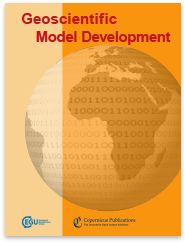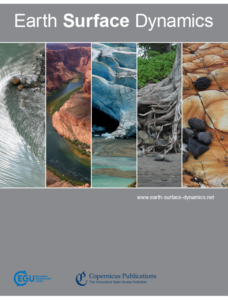Each month we feature specific Divisions of EGU and during the monthly GeoRoundup we put the journals that publish science from those Divisions at the top of the Highlights roundup. For September, the Divisions we are featuring are: Climate: Past, Present & Future (CL), Earth and Space Science Informatics (ESSI) and Hydrological Sciences (HS). They are served by the journals: Climate of the Past (CP), Earth System Dynamics (ESD), Geoscientific Instrumentation, Methods and Data Systems (GI), Geoscientific Model Development (GMD), Hydrology and Earth System Sciences (HESS), SOIL, and Weather and Climate Dynamics (WCD).
Featured highlights
Hydrology and Earth System Sciences:
 Calibration of groundwater seepage against the spatial distribution of the stream network to assess catchment-scale hydraulic properties – 6 September 2023
Calibration of groundwater seepage against the spatial distribution of the stream network to assess catchment-scale hydraulic properties – 6 September 2023
We propose a model calibration method constraining groundwater seepage in the hydrographic network. The method assesses the hydraulic properties of aquifers in regions where perennial streams are directly fed by groundwater. The estimated hydraulic conductivity appear to be highly sensitive to the spatial extent and density of streams. Such an approach improving subsurface characterization from surface information is particularly interesting for ungauged basins.
Other highlights
Analysis of in situ measurements of electron, ion and neutral temperatures in the lower thermosphere–ionosphere – 8 September 2023
Atmospheric Chemistry and Physics:
Atmospheric CO2 inversion reveals the Amazon as a minor carbon source caused by fire emissions, with forest uptake offsetting about half of these emissions – 1 September 2023
Opinion: Atmospheric multiphase chemistry – past, present, and future – 4 September 2023
Molecular simulations reveal that heterogeneous ice nucleation occurs at higher temperatures in water under capillary tension – 18 September 2023
High-resolution data reveal a surge of biomass loss from temperate and Atlantic pine forests, contextualizing the 2022 fire season distinctiveness in France – 13 September 2023
Atmospheric drivers of melt-related ice speed-up events on the Russell Glacier in southwest Greenland – 11 September 2023
Modes of Antarctic tidal grounding line migration revealed by Ice, Cloud, and land Elevation Satellite-2 (ICESat-2) laser altimetry – 15 September 2023
EGU in the news – September
- New methane detection method will expose super-emitters (Earth.com) based on study published in the EGU journal Atmospheric Chemistry and Physics
- Trio of Sentinel satellites map methane super-emitters (Phys.org) based on study published in the EGU journal Atmospheric Chemistry and Physics
- Astronaut wields new space camera to see lightning strikes on Earth (Space.com) mentions research presented at the EGU23 General Assembly
- Global heating worsening the dangers of high-altitude mountaineering, warn experts (WION), based on study published in the EGU journal Natural Hazards and Earth System Sciences
- Climate change is making climbing in the Himalayas more challenging, experts say (ABC news) cites study published in the EGU journal Natural Hazards and Earth System Sciences
- Sinkhole swallows cars in wake of devastating flooding in Massachusetts (The Independent, UK) mentions study published in the EGU journal Natural Hazards and Earth System Science














